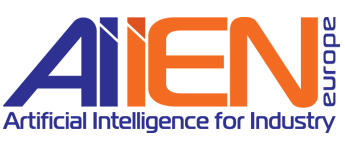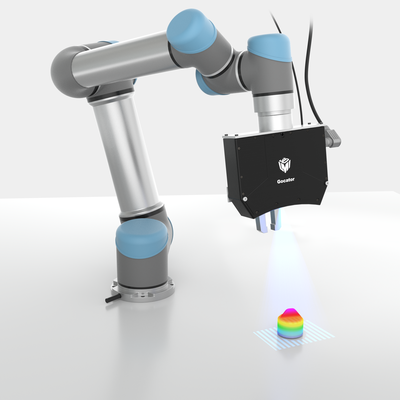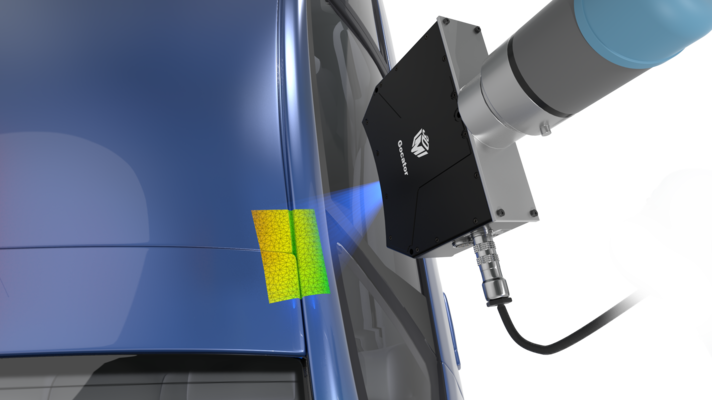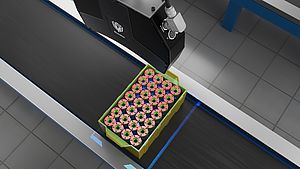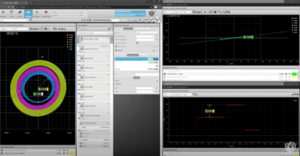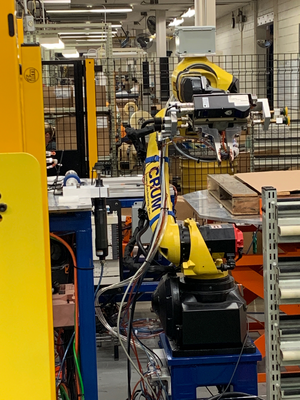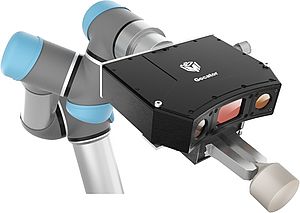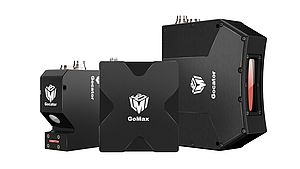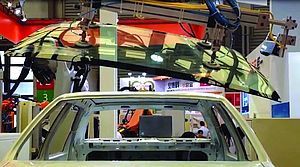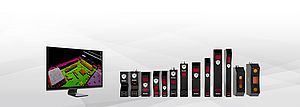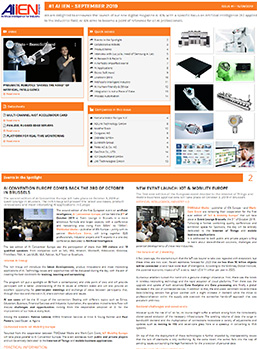Two is better than one. We’ve heard this motto many times, on the television, on ads and promotional spots. Usually this is a commercial way to tell you: ‘’Hey, buy this one and get two instead’’, which can have a powerful impact on our consumerist souls, even though we don’t know exactly why we want the second thing when we were only needing the first one to begin with.
In industry integration, where you get two or even more products in one, things are different. It’s a serious matter with major cost benefits. Take LMI Technologies, specialist of 3D scanning solutions and manufacturer of 3D sensors for automation, inspection, and optimization: At SPS IPC Drives 2018, the company announced the integration of its Gocator® Snapshot sensor into applications using Universal Robots (UR) devices.
We were there when LMI gave this exciting announcement, with our camera and microphone ready to film the results of this integration. Now, we want to learn more about it and about the collaboration between LMI and UR, with the help of Christian Benderoth, Regional Development Manager, EMEAR at LMI Technologies.
Integration is not a piece of cake
For those who think that integration just means fitting one device onto another, I have bad news: Don’t try it at home as you will be disappointed. For LMI to receive an official certification from Universal Robots required a lot of time and effort: ‘’UR is very rigorous in its approach to certification in order to ensure high-quality and performance, so our engineers went through many development steps to get Gocator® on the level it needed to be at. It has been a great experience, we’ve learned a lot, and we’re happy to finally be at this stage where the integration process has reached fruition.’’ said Christian Benderoth during our conversation.
LMI is very proud to now be on the list of respected providers with UR plus certification. The job is not over yet, as the company will keep working with UR to refine and further improve the solution.
Integration means flexibility and efficiency
Going into more detail, we asked Mr. Benderoth to enlighten us on the characteristics and the advantages of this integration, which is made possible thanks to the implementation of the Gocator® URCap plugin. ‘’The plugin allows engineers to connect to a robot controller or PC application to perform sensor hand-eye calibration and implement pick-and-place movement. Setting up robotic systems for factory automation applications it’s now easier, as there is no need for additional programming.’’ explained Mr. Benderoth.
With UR integration now in place, engineers can use snapshot sensors in a wide variety of factory automation applications. ‘’Gocator snapshot sensors use stereo structured light that generates high-density 3D data with a single scan trigger. Each sensor offers onboard data processing, built-in 3D measurement tools, and decision-making logic to scan and inspect any part feature with stop/go motion at speeds up to 10 kHz, achieved with our GoMax® solution for vision acceleration.’’ illustrated Mr. Benderoth. This translates into high-performance 3D results with the guarantee of a complete robot vision-guidance solution that can deliver inspection for quality control and smart pick-and-place for automated assembly.
Gocator and UR cobots… The perfect fit?
As in every relationship, the two parties must be sure that they are the best fit for each other. How is this achieved? Take a blank piece of paper, draw a line, and write down all the pros and cons… and then count! But let’s not be too cynical… The use of UR cobots with an integrated snapshot sensor enables greater flexibility and control and creates a more customizable tool: ‘’Since you don’t have to write any robot programs or calibration routines, it doesn’t take any expertise in order to set up your robotic systems for factory automation applications. Any engineer can do it.’’ explained Christian Benderoth.
With the Gocator® URCap plugin, which consists of an application that is installed on the UR robot, it is possible to trigger scans on the sensor and retrieve the positional information of the calibration target in the sensor’s field of view. ‘’After you’ve performed your hand-eye cali-bration, you can add programming nodes in the UR robot’s interface to tell the robot to connect to the sensor, load a job on the sensor, trigger a scan, and return positional measurements in the X, Y, and Z axes.’’ added Mr. Benderoth. The magic is done.
What’s in the crystal ball
How do technologies based on integration fit into today’s global market? The competition among companies is high, as is the desire to gain market share by transforming the business model from system provider to solution provider. This is a general trend among industrial companies. So, what is the future of a model based on integration? If flexibility and user-friendliness are guaranteed, the potential for the integration market is immense: ‘’Engineers using UR robots can now easily integrate Gocator® smart 3D snapshot sensors into their applications. Gocator® is able to provide the UR robot not only with the vision it needs in order to “see”, but also with the smart functions required in order to take action and make decisions. This presents a huge global market opportunity to provide customers with a complete robotic solution.’’ said Mr. Benderoth. Automation of repetitive tasks can deliver many benefits, and when it comes to increased flexibility, accuracy, waste minimization, and efficiency… Bob's your uncle!
Sara Ibrahim
